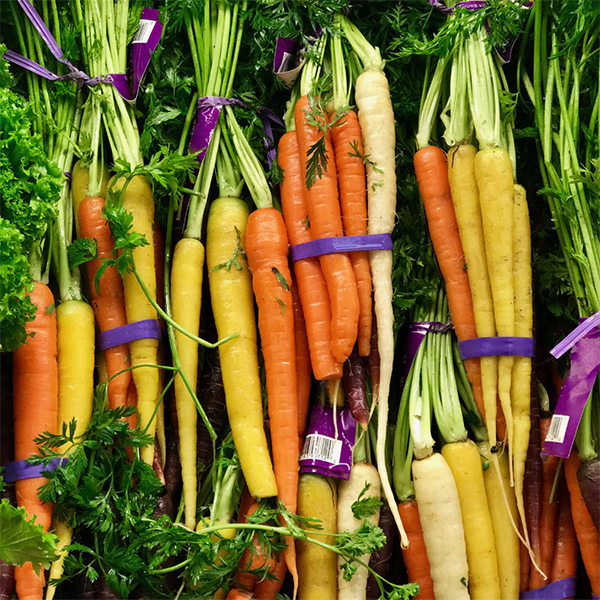Developing good organic handling practices in the meat department starts with an understanding of all of the areas where organic meat is present, beginning with receiving and continuing through storage, preparation, display, labeling and cashier sales. Protection of organic integrity includes keeping organic meats clearly separate from conventional meats to prevent possible contamination.
Meat Cleaning and Sanitizing
Cleaning and sanitizing the meat department is similar to other departments. Follow the guidelines in Section 2 (Cleaning and Sanitizing) to prevent contamination.
- Store cleaning materials away from food products and preparation areas. Never store these materials above a sink or preparation area.
- Always clean and thoroughly rinse all sinks, tubs, preparation areas and utensils before using these areas for organic meat products.
- Use only department approved cleaning materials.
- Complete any written documentation of your cleaning activities when needed.
- Clean up spills when they occur.
Meat Receiving
- Always verify meat ordered matches what is delivered and what is written on the invoice/bill of lading.
- Always look for clear organic labeling and certifying agent seal or name on incoming containers.
- Place any meat product in a quarantine area if it does not meet USDA labeling rules. Get missing information from supplier.
Meat Storage
Proper back stock labeling is key to prevent non-organic products from being used to fill organic displays or being labeled organic on signage. If any mix-up occurs, employees should understand that they have management’s full support to relabel the entire lot and sell it as non-organic.
- Have separate storage areas for organic and non-organic meat.
- Label organic and non-organic storage areas clearly.
- Non-organic product boxes that have been crushed or damaged should be reviewed to make sure they do not pose a contamination risk to organic meat stored nearby.
- Organic meat should never be stored below non-organic mea• Tubs, counters, scoops and other items used to repackage or prep bulk meat must be thoroughly cleaned and rinsed between organic and non-organic products.
- Never store organic meat in boxes, trays or tubs that have been used for conventional meat products unless after a thorough washing.
Meat Packaging
- When prepping or thawing product in sitting water, organic product should not be processed in water used to process non-organic product.
- Trays, buckets and other equipment used in processing non-organic meat should be washed before being used to process organic meat.
- Only new packaging materials may be used to pack organic meat.
- All packaging materials must be food grade, with special care taken to purchase and use items that do not pose a risk from dyes or fumigants. Ask your supplier to verify that no fumigants are present in the materials that you are using, including the drip pads placed on the bottom of Styrofoam trays.t. There is a risk of dripping onto the organic product.
Labeling Individual Meat
- Fresh meat cuts fall in the “100% organic” product labeling category. The term, “100%organic” or “organic” can be used on the printed meat label.
- Whenever possible, the organic meat should be individually labeled, stickered, taped, sleeved or packaged clearly with “Organic.” By doing this, both the consumer knows what they are buying, and the cashier knows what is being sold.
- Any labels used in prepared or “oven ready” foods cannot use the word, “Certified,” or the USDA seal unless the retail store is certified by a USDA accredited certifying agent.
Display Case Labeling of Meat Department
- The display case label must state the product as “organic”. The Food Safety Inspection Service (FSIS) requires the label bearing the claim to include the certifying entity’s name, website address, and logo, when the organization has a logo. An asterisk or other symbol may connect
- the claim to this information. Consumer confidence in organic production is enhanced when they are made aware of the organic certification system.
- Prevent Commingling and Contamination: Organic meat must not touch non-organic meat. Organic meats should not be displayed below non-organic meat. Segregating organic from non-organic greatly reduces the risk of commingling or contamination.
- Meat dividers should be thoroughly washed with soap prior to use.
Resources Recommended for Meat Departments
- Sources of “Organic” tapes, twist ties, and stickers
- Sources of organic promotional materials
- Sources of “Organic” signage
Fish and Seafood
A small amount of imported organic fish is sold in the U.S. each year. However, organic seafood sales remain small as USDA organic regulations still do not include standards for either wild-caught or farm-raised fish (aquaculture).










